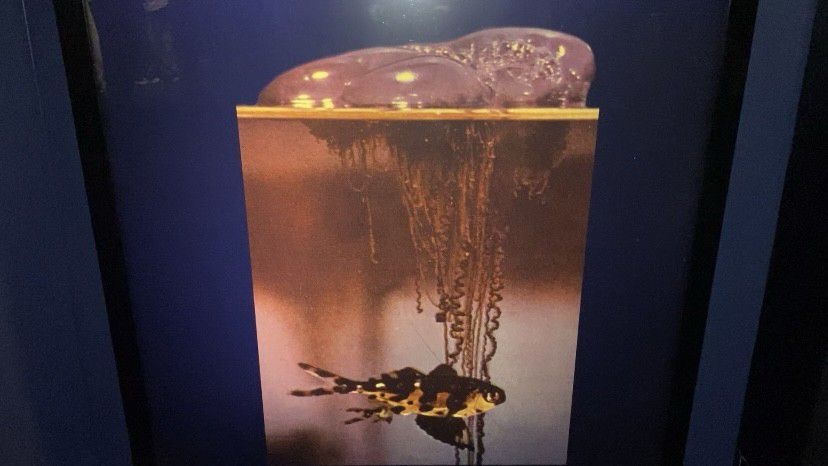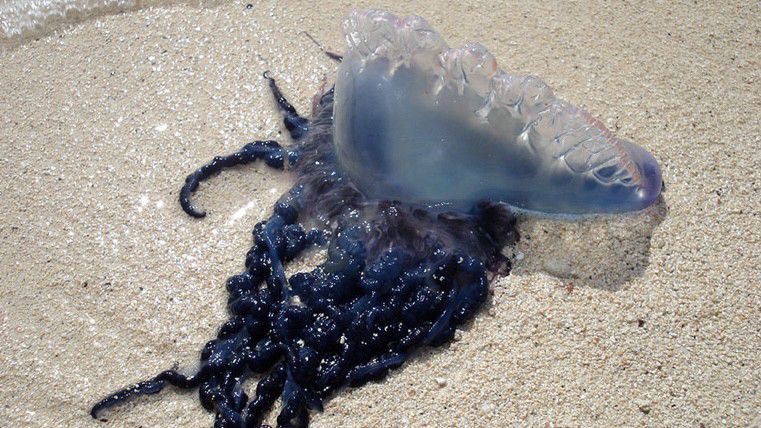CARTERET COUNTY, N.C. — It’s that time of year when people are flocking to beaches to cool off on a hot day.
The National Oceanic and Atmospheric Administration, however, is waving the red flag and warning beachgoers to be on the lookout for creatures that pack a big sting lurking in waters along our coast: the Portuguese man o’ war. This week, the agency issued a marine life warning because the critters have been spotted near Pine Knoll Shores.
Rachel Stringfellow, a jellyfish expert at the North Carolina Aquarium at Pine Knoll Shores, has always loved jellyfish.

“Ever since I was a little kid,” Stringfellow said. “I’ve grown up here, and I’ve just been fascinated when I start seeing them wash in.”
She says the man o’ war isn’t actually a jellyfish at all.
“So they’re related to a jellyfish, but they’re more of what’s called a siphonophore,” Stringfellow explained. “Which means it’s just a colony of individuals that work together as one.”
Although it’s not technically a jellyfish, the man o’ war still has a powerful sting.

“Anytime they get touched, their tentacles are lined with stinging cells called nematocysts,” Stringfellow explained. “And so that touching triggers a little barb inside to come out, and that’s what kind of stings you with that venom.”
The animal is recognized by its float, which can be seen above the water and comes in a variety of purple to pink colors. Beneath the water, however, are tentacles that average 30 feet in length, although some can be over 100 feet long.
“They are very beautiful animals,” Stringfellow said. “Just admired from afar.”
Man o’ wars can’t swim like other fish, but instead, use wind and currents to travel through the water. Stringfellow says from June to October, strong winds can blow them onto beaches up and down the North Carolina coast. But these creatures can still sting even weeks after washing up on shore … so be cautious.
Although the Portuguese man o’ war sting isn’t usually fatal, it can be extremely painful and cause welts to appear on skin. The best treatment is to remove any stingers and use vinegar to neutralize the venom.











